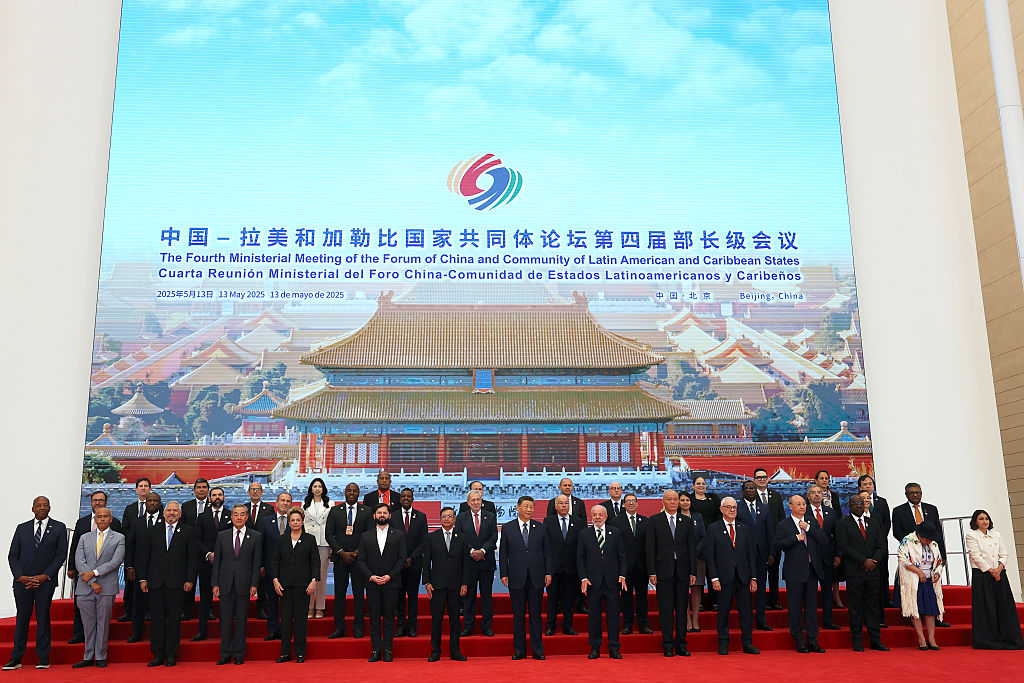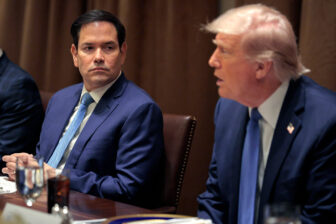SÃO PAULO—It came as no surprise that China committed earlier this week to increase its economic and geopolitical engagement with Latin America and the Caribbean. But what does stand out is that Xi Jinping appears to be aligning more closely than ever with the region as the Trump administration pushes an agenda focused on migration, tariffs, and even expansionist ambitions.
The contrast between the two approaches toward Latin America and the Caribbean was evident as Beijing hosted the fourth ministerial meeting of the China-CELAC Forum. The presence of leaders such as Luiz Inácio Lula da Silva (Brazil), Gustavo Petro (Colombia), and Gabriel Boric (Chile) signaled a renewed willingness for regional coordination in dialogue with Beijing.
At the same time, China reaffirmed its role as an engaged power in the Global South, underscoring the dilemmas Latin American nations have faced amid heightened U.S.-China competition. Even Haiti and Saint Lucia, two of Taiwan’s dwindling number of diplomatic allies in the region, participated.
By announcing a $9 billion yuan-denominated credit line and fresh infrastructure investment for the region, Xi not only reasserted China’s role as a development financier but also positioned the yuan as an alternative to the dollar-dominated monetary logic—a strategy aligned with the country’s long-term efforts to internationalize its currency. “There are no winners in tariff wars or trade wars. Bullying or hegemonism only leads to self-isolation,” Xi said in his inaugural speech.
Sino-Latin American commercial complementarity is well established: China imports a vast amount of commodities and exports an ever-increasing amount of manufactured goods. However, recent agreements reveal growing sophistication in areas of cooperation. Chinese investments in electric mobility, renewable energy, artificial intelligence, and green infrastructure signal a new phase in this partnership, one that transcends primary export dependency and extends into high-tech value chains.
Deepening Brazil-China ties
For Brazil, the $5 billion planned investment announced during Lula’s visit to Beijing represents a strategic diversification, encompassing sustainable aviation fuel (SAF) production, electric vehicle plants, and solar and wind energy projects in the northeast. The commitment, under the umbrella of 36 commercial agreements, combines economic diplomacy and the green transition with the potential to generate jobs, innovation, and medium-term geopolitical gains.
These investments also reveal China’s ability to align commercial interests with a systemic vision of global integration, bringing together the state, private companies, and banks in a coherent international expansion strategy. In this context, Brazil gains the opportunity to reposition itself as a hub of stability and sustainability, reinforcing its role as a key interlocutor in a shifting global order.
For President Luiz Inácio Lula da Silva, the new chapter in the relationship with China presented an opportunity to raise his voice against a tariff-centered U.S. policy and reaffirm his commitment to help negotiate peace in Ukraine. “Trade wars have no winners,” Lula said in a speech. “They raise prices, depress economies, and erode incomes of the most vulnerable in all countries. President Xi Jinping and I advocate for fair trade based on the rules of the World Trade Organization.” Addressing the war, he stated that the “‘common understandings between Brazil and China on political settlement of the Ukraine crisis’ offer a foundation for a comprehensive dialogue that allows peace to return to Europe.”
Horizontal cooperation
China aims to expand its presence in Latin America, just as the U.S. adopts a protectionist and anti-multilateral stance under Trump’s leadership. Washington’s strategic neglect of its neighborhood contrasts with Beijing’s intensive engagement, patient diplomacy, and attractive financing. The void left by the U.S., especially in infrastructure funding and support for regional integration, has been skillfully filled by Chinese diplomacy, which offers resources and a message of respect for sovereignty and non-intervention.
Although China brings concrete opportunities to Latin American countries, deepening these ties also imposes challenges. The first is symbolic and political: To what extent does growing dependence on Chinese investments compromise the region’s autonomy in decision-making? The second is structural: How can Latin American countries ensure that ties with China last without replacing one dependency with another? The third challenge is internal: Are our political systems—still marked by instability and weak institutional resilience—prepared to negotiate on equal footing with a power like China? Furthermore, there is the risk that the appeal of easy, short-term solutions may undermine efforts to build an autonomous and sustainable regional agenda.
By defending the strengthening of CELAC and affirming that “the uncompromising defense of multilateralism is an urgent and necessary task,” Lula sought to demonstrate that it is possible to engage with multiple power centers without relinquishing authority. However, this equation requires constant vigilance, effective regional coordination, and the capacity to formulate long-term national strategies—conditions that have not always been present in recent history. It also calls for rethinking the role of regional multilateral organizations, such as MERCOSUR, as platforms that can lend coherence to Latin America’s voice in global forums.
The Beijing summit leaves valuable lessons. First, multipolarity is already a reality, and Latin America must position itself intelligently on this evolving chessboard. The second is that presence matters: Those willing to listen, invest, and commit—as China is doing today—gain space. The third is that international leadership is not delegated; instead, it is built through vision, consistency, and a willingness to take on responsibility.
In this redrawn world, Latin America’s place may depend less on ideological affinities and more on its ability to convert opportunity into influence. There is a narrow—but possible—path toward more autonomous leadership.







